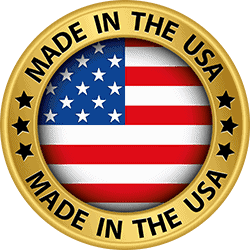What are Microplastics?
Microplastics are very small pieces of plastic that pollute the environment. Microplastics are not a specific kind of plastic, but rather any type of plastic fragment that is less than 5mm in length according to the U.S. National Oceanic and Atmospheric Administration (NOAA). They enter natural ecosystems from a variety of sources, including cosmetics, clothing, and industrial processes.
Microplastics in bottled water
Bottled water sampled from manufacturers around the world is teeming with microplastics according to a new report.
Tests of 250 bottles from 11 bottled water brands revealed microplastics in 93 percent of the samples, with an average of 325 particles per 1 litre of water.
These findings, discovered by scientists at the State University of New York in Fredonia, sound alarming. However, the report was not submitted for publication in a scientific journal, a process that involves an extensive review of a study’s methods and findings by scientists who were not involved in the research. Rather, the investigation was launched and then released by Orb Media (OM), a nonprofit that uses journalism and data science to investigate global environmental issues, according to the company’s website. [Why Doesn’t Plastic Biodegrade?]
The consequences of these findings for human health are “unknown,” OM representatives said in a statement.
Microplastics measure under 0.2 inches (5 millimetres) in length — about the size of a sesame seed or smaller — and they originate from many sources, such as microbeads that are commonly found in health and beauty products, according to the National Oceanic and Atmospheric Administration (NOAA).
Humans have produced an estimated 9 billion tons of plastic, Live Science previously reported. Plastic is the most common form of rubbish found in the world’s oceans, and microplastics are so small that they can evade methods for collecting or filtering plastic trash; studies have shown that microplastics are present in nearly every environment on Earth and can be found in the guts of many types of sea birds and marine life, according to NOAA.
And according to the new report, microplastics are also widely distributed in bottled drinking water. Regardless of whether the findings are verified by scientists unaffiliated with the study, the health risks of microplastics are far from known and depend on the quantities that are ingested and how long the minuscule particles linger in a person’s gut, experts say.
Microplastics in Toothpaste and Makeup
Microbeads are tiny pieces of polyethylene plastic added to health and beauty products, such as some cleansers and toothpaste.
Two classifications of microplastics.
Primary microplastics are any plastic fragments that are already 5mm or less in size before they enter the environment. e.g. microfibers from clothing, micro-beads, and plastic pellets (sometimes known as nurdles).
Secondary microplastics are microplastics that are created from the degradation of larger plastic products into the environment through natural weathering processes. Sources like bottled water, soda bottles, fishing nets, and plastic bags.
Both types exist in high levels in the environment, particularly in aquatic and marine ecosystems.



